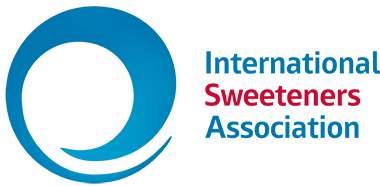Guest panellist Professor Dr. Adam Drewnowski, Center for Public Health Nutrition of the University of Washington in Seattle, emphasised “including low and non-calorie sweeteners in the diet helps control weight. Moreover various laboratory studies have consistently shown that LNCS do not over-stimulate taste receptors, do not trigger hunger and do not cause people to overeat as a result”.
He added “Although it has not been possible to demonstrate causality, the analysis of data from large-scale observational studies and clinical interventions done in the United States has made it possible to identify some socioeconomic trends linked to the consumption of beverages with low and no calorie sweeteners”.
According to these observational studies, people who consume foods and drinks that contain LNCS are often highly educated and “it is common for them to have a healthy lifestyle, with appropriate dietary and exercise habits”.
EFSA evaluation confirmed safety of LNCS
Professor Dr. Arturo Anadón, Toxicology and Pharmacology Department of the Universidad Complutense’s Veterinary School, also emphasised the safety of LNCS, saying “currently all these low and no calorie sweeteners are evaluated and approved by the European Food Safety Authority. The compounds that form them are found naturally in other types of foods such as fruit and vegetables, and it has been shown that their use within the recommended daily amounts does not represent any risk for developing diseases”.
In addition to supporting the reduction and maintenance of weight, and being a useful tool in the management of NCDs such as diabetes mellitus, studies show that there is no association between the consumption of LNCS and an increased incidence of other diseases such as cancer.
Professor Carlo la Vecchia, Epidemiology Department of the Mario Negri Pharmacology Research Institute in Milan, emphasised in his presentation, “recent studies carried out in Italy comparing patients with different kinds of cancer to healthy patients, have shown that there is insufficient epidemiological evidence to suggest a link between the consumption of saccharine, aspartame or other sweeteners and the risk of suffering from the most common neoplasms”.
More information about the scientific experts
Prof. Dr. Arturo Anadón: Full professor and Head of Department of Pharmacology and Toxicology, University Complutense of Madrid. Master in Basic Pharmacology, Faculty of Medicine, University Complutense of Madrid (Spain). Visiting Scientist, Department of Animal Pathology, National Veterinary School, Toulouse, France. IRI Research Institute Fellowship, USA. Medical Research Council, London, U.K. Visiting Research Fellow. Departments of Applied Physiology and Surgical Science, and Pharmacology, Royal College of Surgeons of England, London, U.K. Fellow Real Colegio Complutense at Harvard University (USA). Member of the Expert Advisory Panel on Food Safety at the World Health Organization, Genève, Switzerland. Member of JECFA. Membership of the European Food Safety Authoritys Panel on Food Contact Materials, Enzymes, Flavourings and Processing Aids. Parma (Italy). Expert of EMA, EFSA, Organization of American States, International Atomic Energy Agency. Member of the Royal Academy of Doctors of Spain. Corresponding Member of the Royal National Academy of Pharmacy. He is author or co-autor of over 200 peer-reviewed research articles and 100 book chapters. Member of editorial board of several journals.
Prof. Dr. Adam Drewnowski: Dr. Adam Drewnowski is the Director of the Center for Public Health Nutrition and Professor of Epidemiology at the School of Public Health, University of Washington. He is Adjunct Professor of Medicine and the Director of the UW Center for Obesity Research.
Dr. Drewnowski received MA degree in biochemistry from Balliol College, Oxford and PhD in psychology from The Rockefeller University in New York. He has been on the faculties at the Rockefeller University and at the University of Michigan before joining the University of Washington. His studies deal with the socio-economic disparities in obesity and diabetes, and the price of healthy foods. Dr. Drewnowski has developed new GIS/GPS methods to map the geography of obesity and diabetes at the neighbourhood scale. His current research focuses on developing value metrics to identify foods that are affordable, accessible, sustainable, and nutrient-rich. He is the author of the Nutrient Rich Foods nutrient profiling models to rank foods based on their nutritional quality. Dr. Drewnowski has served on the Institute of Medicine Standing Committee to Prevent Childhood Obesity and is currently working on nutrient density of the diet in relation to greenhouse gas emissions; ranking foods by their nutritional value and estimated carbon cost.
Carlo La Vecchia: Dr. La Vecchia received his medical degree from the University of Milan and a master of science degree in clinical epidemiology from Oxford University. He is recognized worldwide as a leading authority in cancer etiology and epidemiology. Presently, he is Professor of Epidemiology at the School of Medicine at the University of Milan. Dr. La Vecchia serves as an editor for numerous clinical and epidemiologic journals. He is among the most renowned and productive epidemiologists in the field with over 1.790 peer-reviewed papers in the literature and is among the most highly cited medical research in the world, according to ISIHighlyCited.com, the developer and publisher of the Science Citation Index. Dr. La Vecchia is an Adjunct Professor of Medicine at Vanderbilt Medical Center and the Vanderbilt-Ingram Cancer Center and of Epidemiology at the University of Lausanne. Dr. La Vecchia is a temporary advisor at the World Health Organization in Geneva, and a registered journalist in Milan. He was Adjunct Associate Professor of Epidemiology at Harvard School of Public Health between 1996 and 2001, and was Senior Research Fellow at the Interest include cancer epidemiology and the risk related to diet, tobacco, oral contraceptive use and occupational or environmental exposure to toxic substances, and analysis of temporal trends and geographical distribution of mortality from cancer, cardiovascular diseases, perinatal and other selected conditions.

